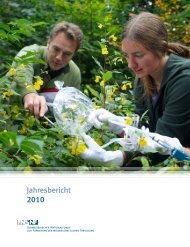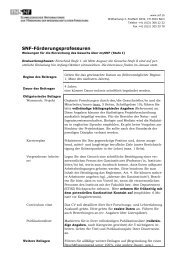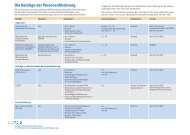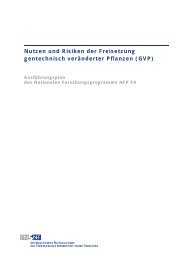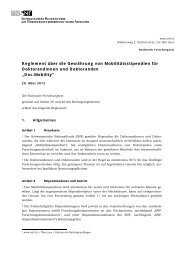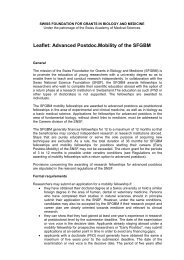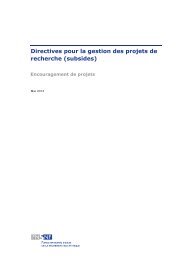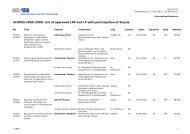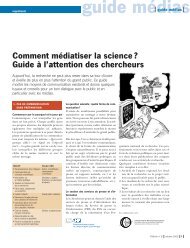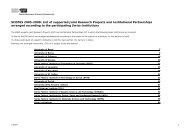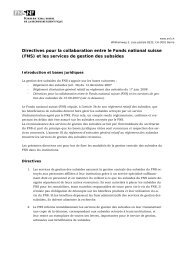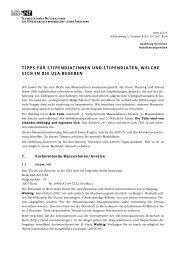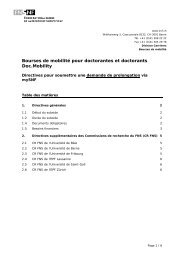NCCR Guide 2013 - Schweizerischer Nationalfonds (SNF)
NCCR Guide 2013 - Schweizerischer Nationalfonds (SNF)
NCCR Guide 2013 - Schweizerischer Nationalfonds (SNF)
You also want an ePaper? Increase the reach of your titles
YUMPU automatically turns print PDFs into web optimized ePapers that Google loves.
Topics<br />
The phenomenon of vulnerability<br />
in terms of social<br />
exclusion or precariousness<br />
threatens individual<br />
life trajectories. The monetary<br />
costs of stress among<br />
the Swiss population are<br />
estimated to amount 8 billion<br />
Swiss francs in the year<br />
2000. LIVES investigates<br />
life trajectories of about<br />
25000 people in Switzerland<br />
across domains, such as<br />
health, family, work, and institutions<br />
in a comparative<br />
and longitudinal perspective.<br />
The overall objective is<br />
to combine socio-economic,<br />
psycho-social and sociopolitical<br />
dimensions to capture<br />
the complexity of vulnerability<br />
dynamics in modern<br />
society.<br />
Members of the Advisory Board<br />
Its interdisciplinary teams<br />
are devoted to study individual<br />
lives from early to<br />
late adulthood and look at<br />
critical events and life sequences<br />
with respect to<br />
three main issues. First,<br />
the processes and states of<br />
vulnerability are studied by<br />
relating social structures,<br />
institutions, and individual<br />
life course, and policy interventions.<br />
Second, the<br />
debate on “new social risks”<br />
such as growing instability<br />
of personal relations, labour<br />
market uncertainty,<br />
and consequences of the<br />
economic crises is linked<br />
to the analysis of the life<br />
course within various welfare-state<br />
regimes. Third,<br />
diffusion and accumulation<br />
effects of critical events<br />
and the efficacy of individual<br />
resources to cope with<br />
stress are examined.<br />
The Universities of Lausanne<br />
and Geneva build on<br />
a ten-year collaboration<br />
and experience in empirical<br />
and methodological research<br />
within the PaVie<br />
Center. The <strong>NCCR</strong> LIVES<br />
collaborates also with the<br />
Swiss Centre of Expertise<br />
in the Social Sciences<br />
(FORS), the Swiss Federal<br />
Statistical Office (FSO) and<br />
with several renowned institutes<br />
and outstanding<br />
life course experts at international<br />
level.<br />
Prof. Billari Bocconi Francesco University, of Oxford, UK<br />
Prof. honorary Lalive d’Epinay Christian University of Geneva, CH<br />
Prof. de Ribaupierre Anik University of Geneva, CH<br />
Prof. Kohli Martin<br />
European University Institute, Florence, IT<br />
Prof. honorary Levy René University of Lausanne, CH<br />
Prof. Lindenberger Ulman MPI, Berlin, DE<br />
Prof. Marshall Victor<br />
University of North Carolina, US<br />
Prof. Mayer Karl-Ulrich<br />
Yale University, US<br />
Prof. McMullin Julie<br />
University of Western Ontario, CA<br />
Prof. Settersten Richard<br />
Oregon State University, US<br />
Prof. Thompson Elizabeth Stockholm University, SE and University of Wisconsin, US<br />
Third Party Cooperation<br />
Programmes<br />
• Population Europe – Network of<br />
Europe’s leading demographic<br />
research centres<br />
Research Institutions<br />
• Birkbeck Institute for Social<br />
Research, Birkbeck College,<br />
University of London, GB<br />
• Population Change and Lifecourse:<br />
Strategic Knowledge Cluster,<br />
University of Western Ontario,<br />
London, CA<br />
• Center for Healthy Ageing<br />
Research, Oregon State University,<br />
Corvallis, US<br />
• Center for Research on Inequalities<br />
and the Life Course, Yale<br />
University, New Haven, US<br />
• Center on Ageing and the Life<br />
Course, Purdue University, West<br />
Lafayette, US<br />
• Centre de Recherche et d’Etudes<br />
en Gestion, Université de Pau<br />
et des Pays de l’Adour, FR<br />
• Centre d’étude de l’emploi,<br />
Ministère du travail,<br />
Noisy-le-Grand, FR<br />
• Centre for Analysis of Social<br />
Exclusion, London School of<br />
Economics and Political Science, GB<br />
• Centre of Gender Research,<br />
University of Oslo, NO<br />
• Department of Sociology,<br />
Case Western Reserve University,<br />
Cleveland, US<br />
• Department of Sociology,<br />
University of Western Ontario,<br />
London, CA<br />
• Dipartimento Sanita, Scuola<br />
Universitaria Professionale della<br />
Svizzera Italiana, Manno, CH<br />
• Etudes sur le Genre et la Diversité<br />
en Gestion, Université de Liège, BE<br />
• Hallie Ford Center for Healthy<br />
Children and Families, Oregon<br />
State University, Corvallis, US<br />
• Industrial Psychology & People<br />
Management, University of<br />
Johannesburg, ZA<br />
• Institute of Longitudinal Studies in<br />
Education, University of Bamberg, DE<br />
• Laboratoire d’Economie et de<br />
Sociologie du Travail, Centre<br />
national de la recherche<br />
scientifique, Aix-Marseille<br />
Université, FR<br />
• Mobilité, logement et entourage,<br />
Institut National Etude<br />
Démographiques, Paris, FR<br />
• Organizational Behaviour and<br />
Human Resources department,<br />
ESCP Europe, Paris, FR<br />
• Service Psychiatrie de Liaison,<br />
Hôpitaux Universitaires de<br />
Lausanne, CH<br />
• Social Policy Research Unit,<br />
University of York, GB<br />
• Forum suisse pour l’étude des<br />
migrations et de la population,<br />
Université de Neuchâtel, CH<br />
<strong>Guide</strong> <strong>2013</strong> | 101




